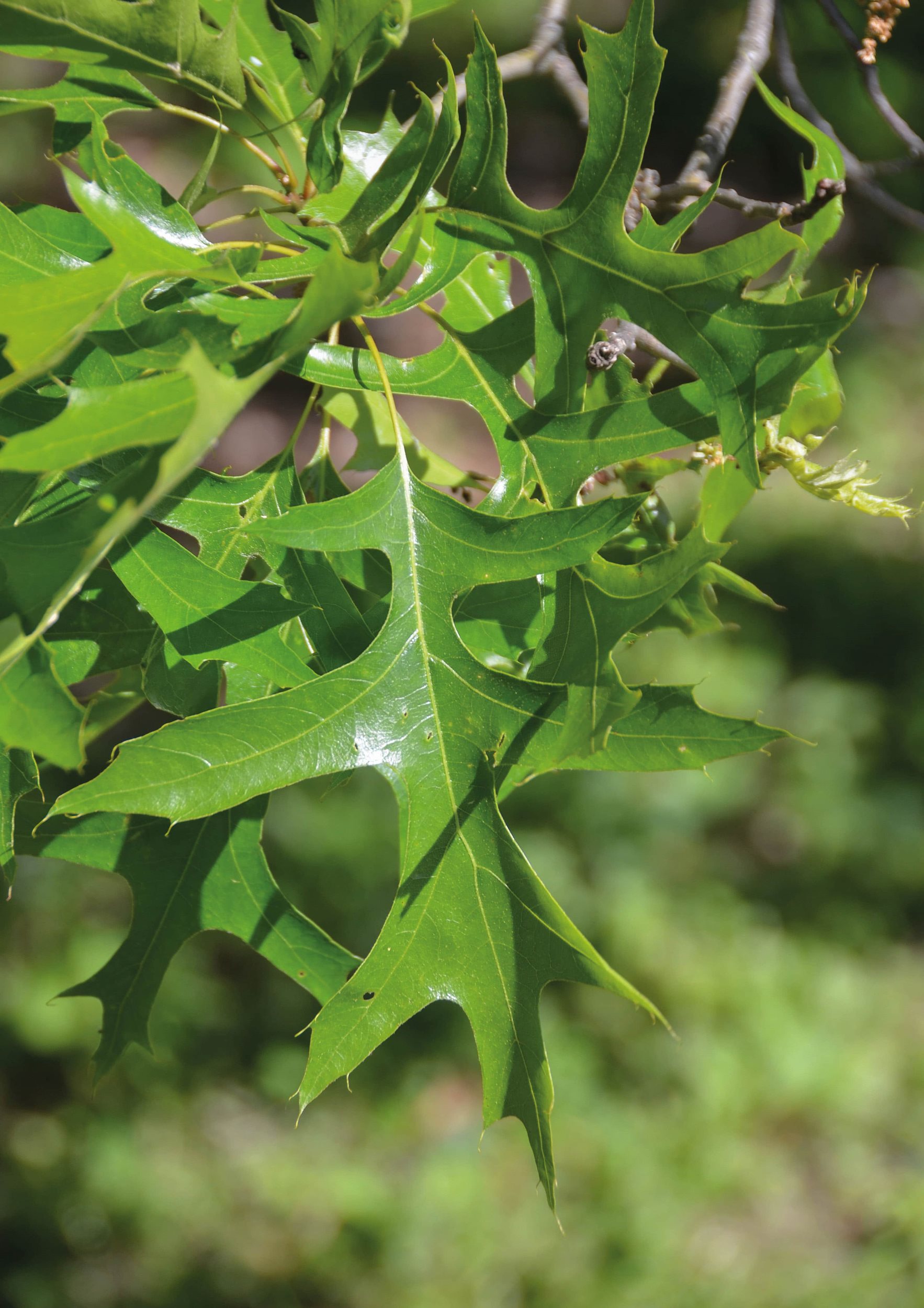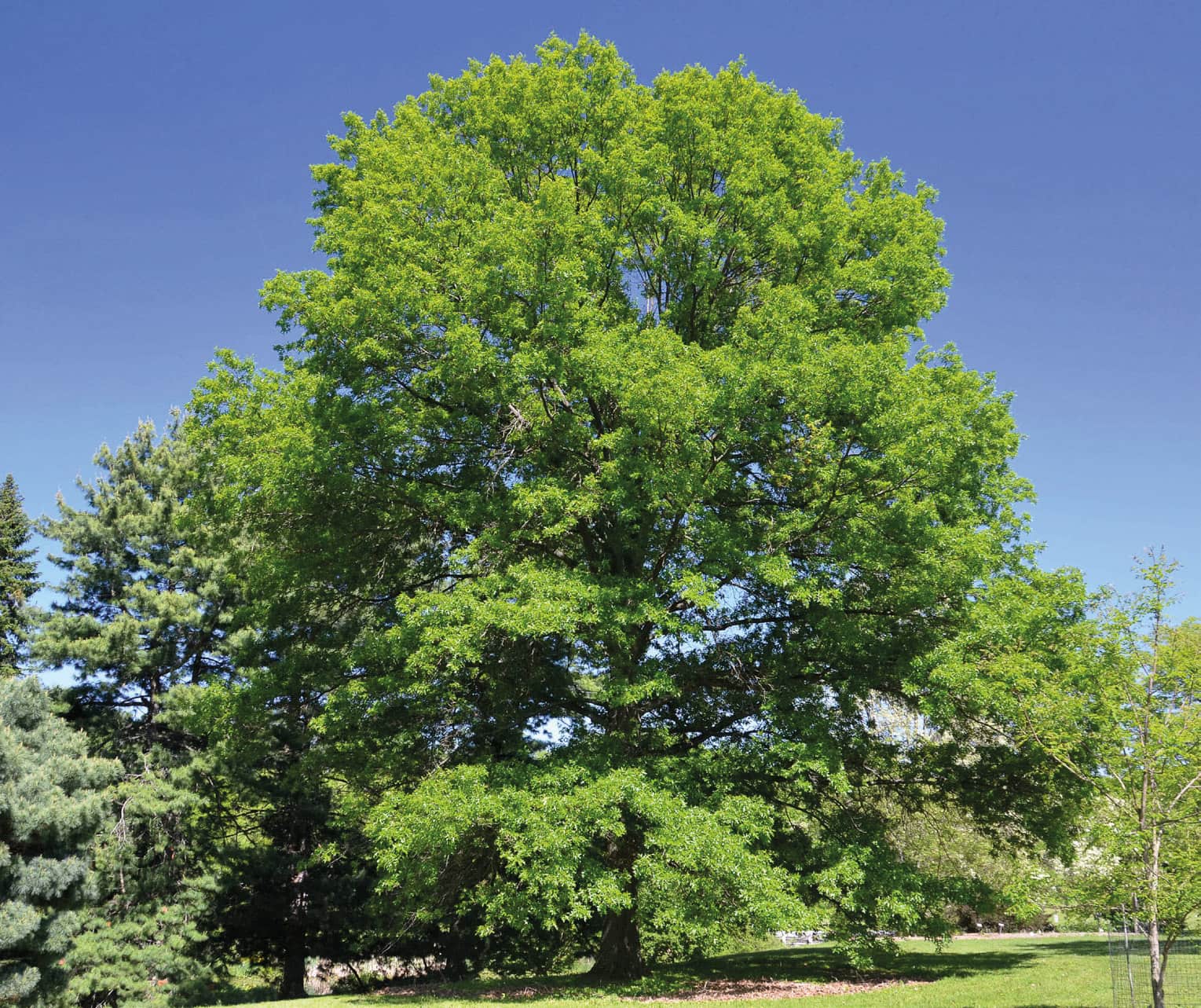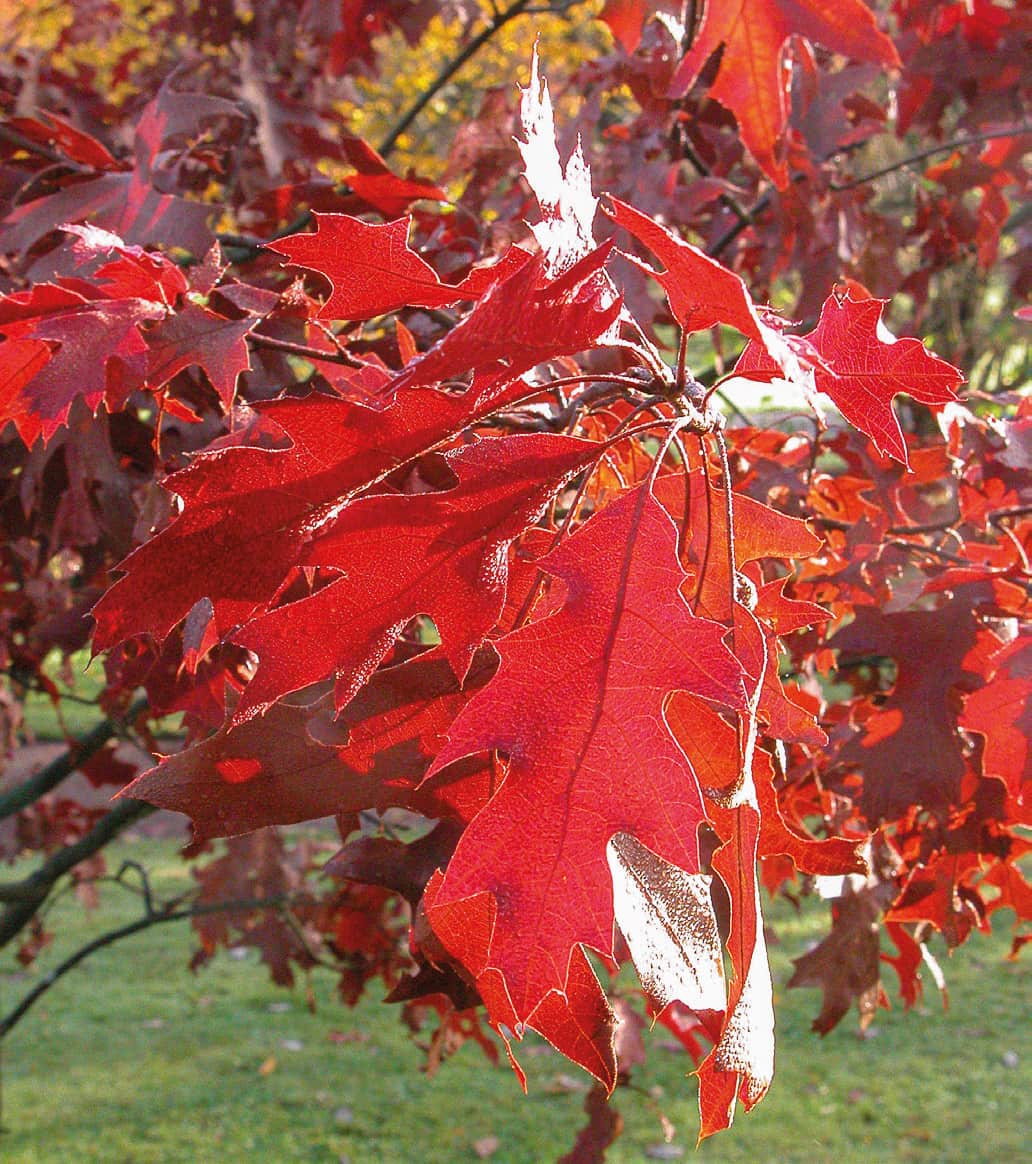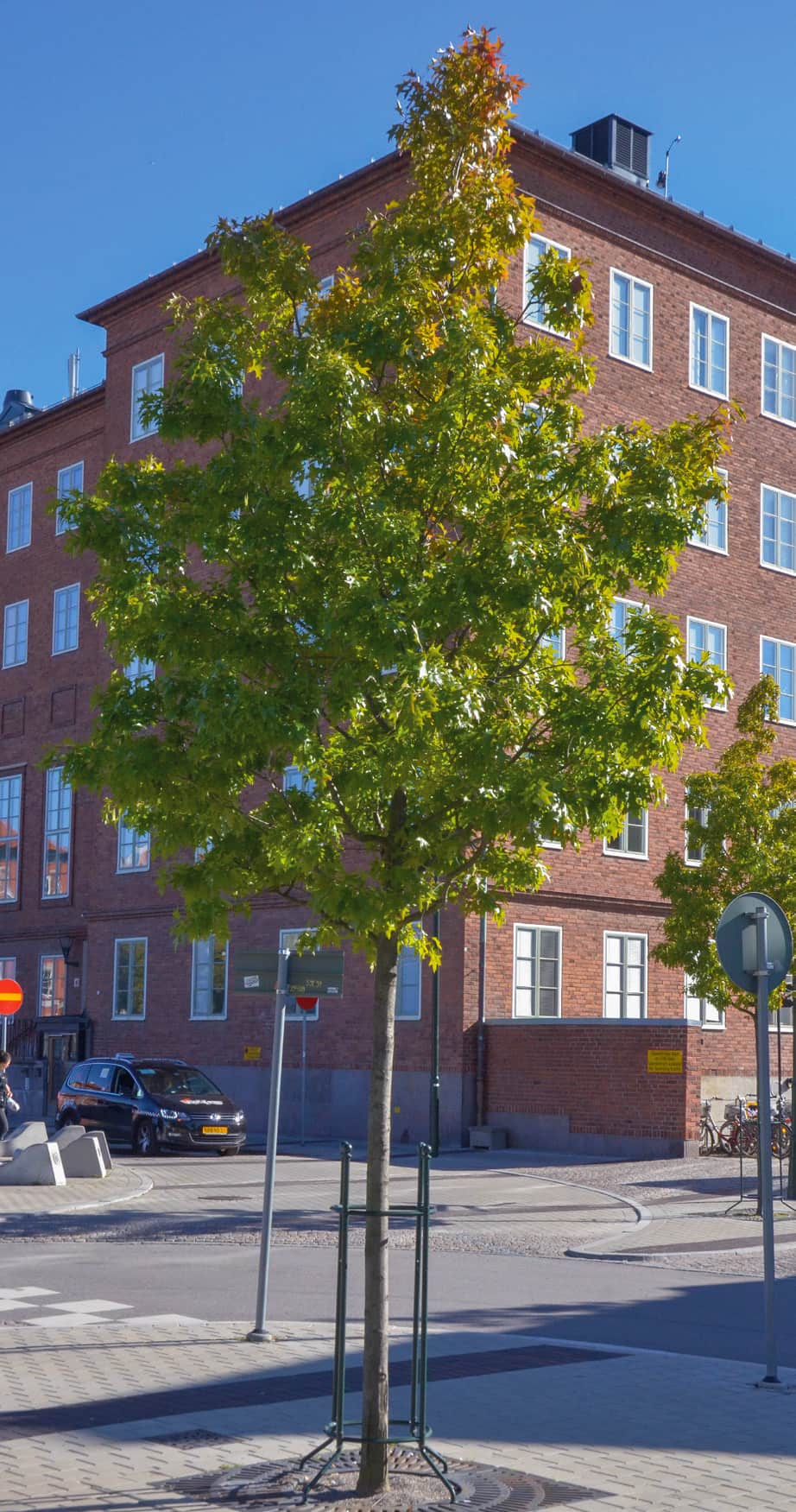
The Plantsman’s Choice
Scarlet Oak
A majestic tree to diversify the urban forest
Henrik Sjöman and Andrew Hirons
The scarlet oak (Quercus coccinea) is a tolerant tree that manages in more challenging urban environments. At the same time, it is large and beautiful with fine seasonal qualities. Today, the species is relatively uncommon in public use, but experience, mainly from other parts of the world, shows its capacity to become a valuable urban tree for both streets and parks.

Older scarlet oak trees develop a rounded crown shape.

One of the main characteristics of the species is its fantastic autumn colours.

Scarlet oak is highly valued for its tolerance to warm and periodically dry growing conditions which qualify the species as a promising street tree.
Scarlet oak has a large natural distribution in eastern North America – from south-eastern Canada and southern Maine in the north to northern Alabama in the south and a westernmost outpost in eastern Oklahoma. This is the oak species of the Appalachians in eastern North America that is comfortable in the widest range of habitats, from moist and fertile to dry and impoverished environments.
Scarlet oak develops into a medium-sized tree, 20–25 metres high. The species is very similar to the pin oak (Q. palustris), but in its youth its pyramidal, excurrent form is not quite as pronounced. The lower branches in particular are more upright, giving it more of an irregular ‘oak’ shape. Both species have distinct horizontal branch positions and a central trunk. Older scarlet oak trees transition into a rounded crown shape with a more irregular and open crown structure. As a young tree, the scarlet oak grows very rapidly, which is perhaps most evident in generous park environments where the annual height increase can be over 70–80 cm.
The scarlet oak belongs to the red oak group, whose members are very variable in leaf size and leaf shape. This makes them difficult to identify and distinguish from each other. The leaves of scarlet oaks are oblong or elliptical and are generally 8–15 cm long and 7–13 cm wide with a transverse or wedge-shaped base. They usually appear with three lobes on each side and are beautifully shiny and dark green on the upper side with a lighter but still shiny green underside. The leaves of the scarlet oak have a deeper lobe than those of the red oak (Q. rubra) and the black oak (Q. velutina). However, it is the lack of distinct brownish-yellow tufts of hair in the primary leaf vein junctions that is the best feature to help distinguish the scarlet oak from its close relatives.
As the name suggests, the autumn colours of scarlet oaks are a beautiful dark red. They begin to turn in late summer and then proceed to transition into an increasingly clear red colour scheme. Autumn colour can vary between different individuals, but the display also varies according to the location and the climate. In general, the colour usually becomes more intense after hot, long summers or when the trees have been planted in a warm location.
In cultivation, scarlet oak is usually represented by the cultivar ‘Splendens’, which has larger leaves than the average for the species and a more reliable dark red autumn colour. The pure species is rare in cultivation and is mainly found in tree collections and arboreta. Seed-germinated trees vary greatly in terms of growth habit and above all the development of autumn colour, and therefore it is better to use the cultivar ‘Splendens’.
Due to the species’ natural distribution in many kinds of forest environments – from dry habitats to moist and resource-rich sites – it can be used in parks and in street environments where space is available for its wide crown. In the eastern United States, the scarlet oak is the second most common oak species in street environments, after the pin oak, as it is highly valued for its autumn colours and tolerance to warm and periodically dry growing conditions.
Dr Henrik Sjöman is a Lecturer at the Swedish University of Agriculture Sciences and a Scientific Curator at Gothenburg Botanic Garden.
Dr Andrew Hirons is a Senior Lecturer in Arboriculture and Urban Forestry at University Centre Myerscough.
This article was taken from Issue 199 Winter 2022 of the ARB Magazine, which is available to view free to members by simply logging in to the website and viewing your profile area.